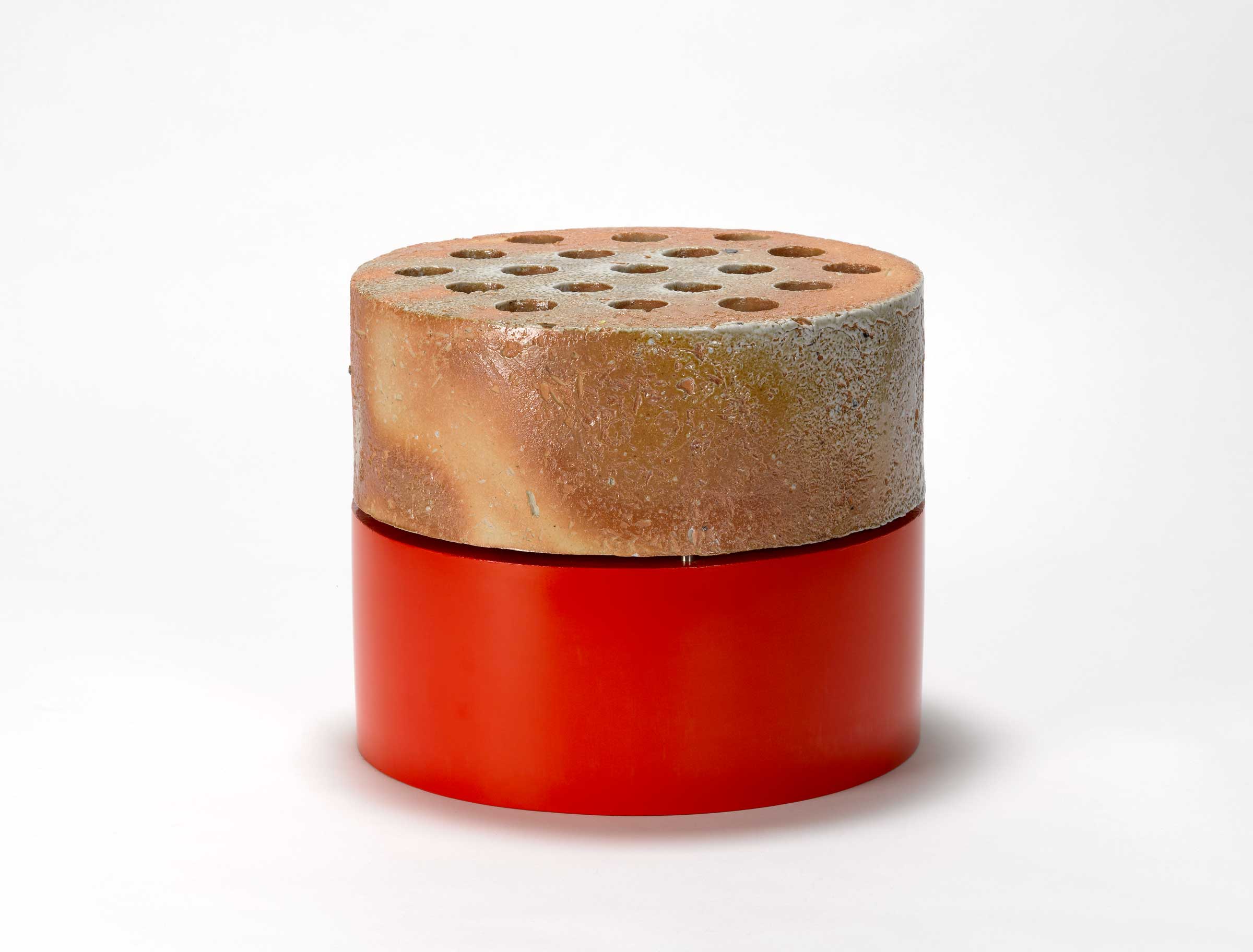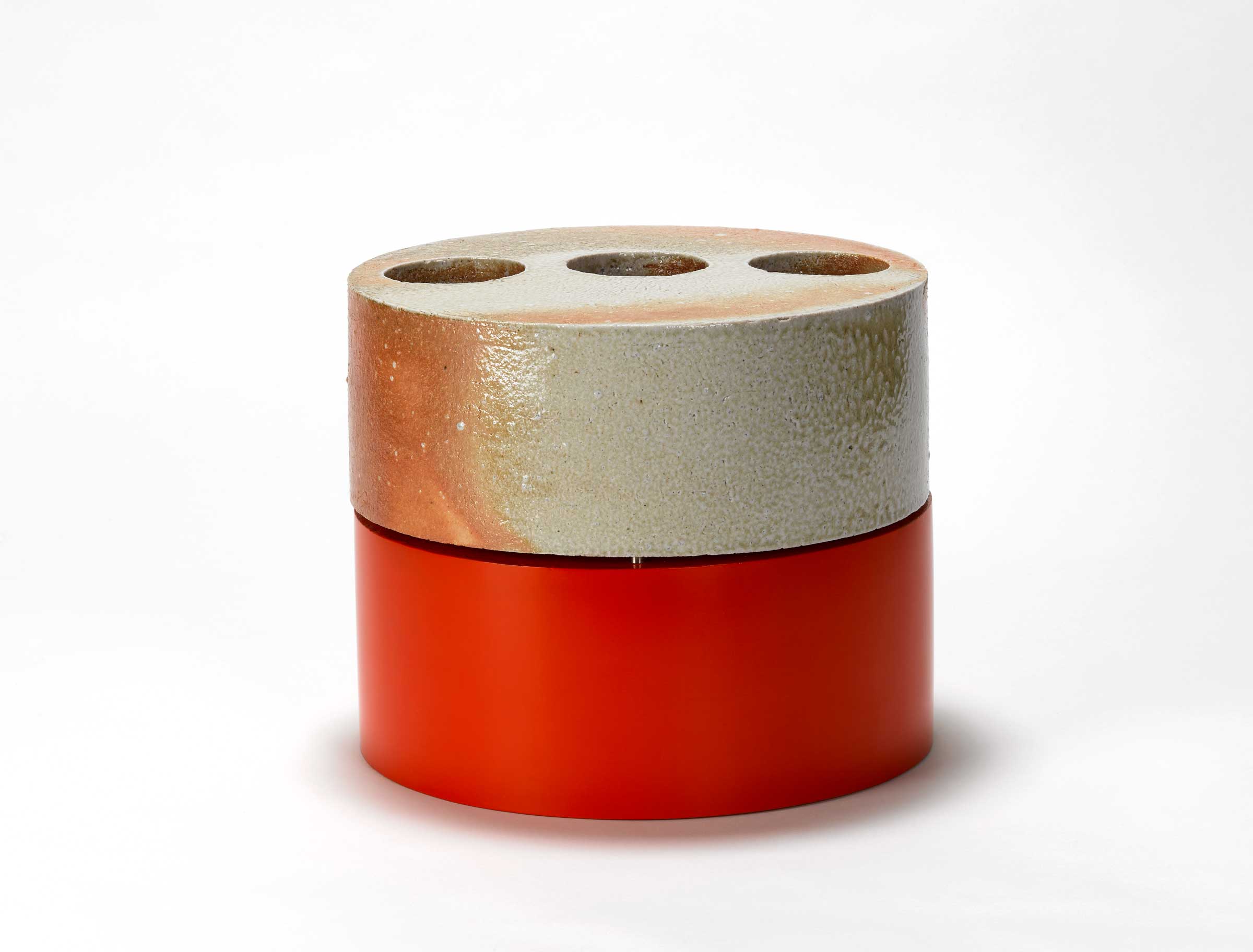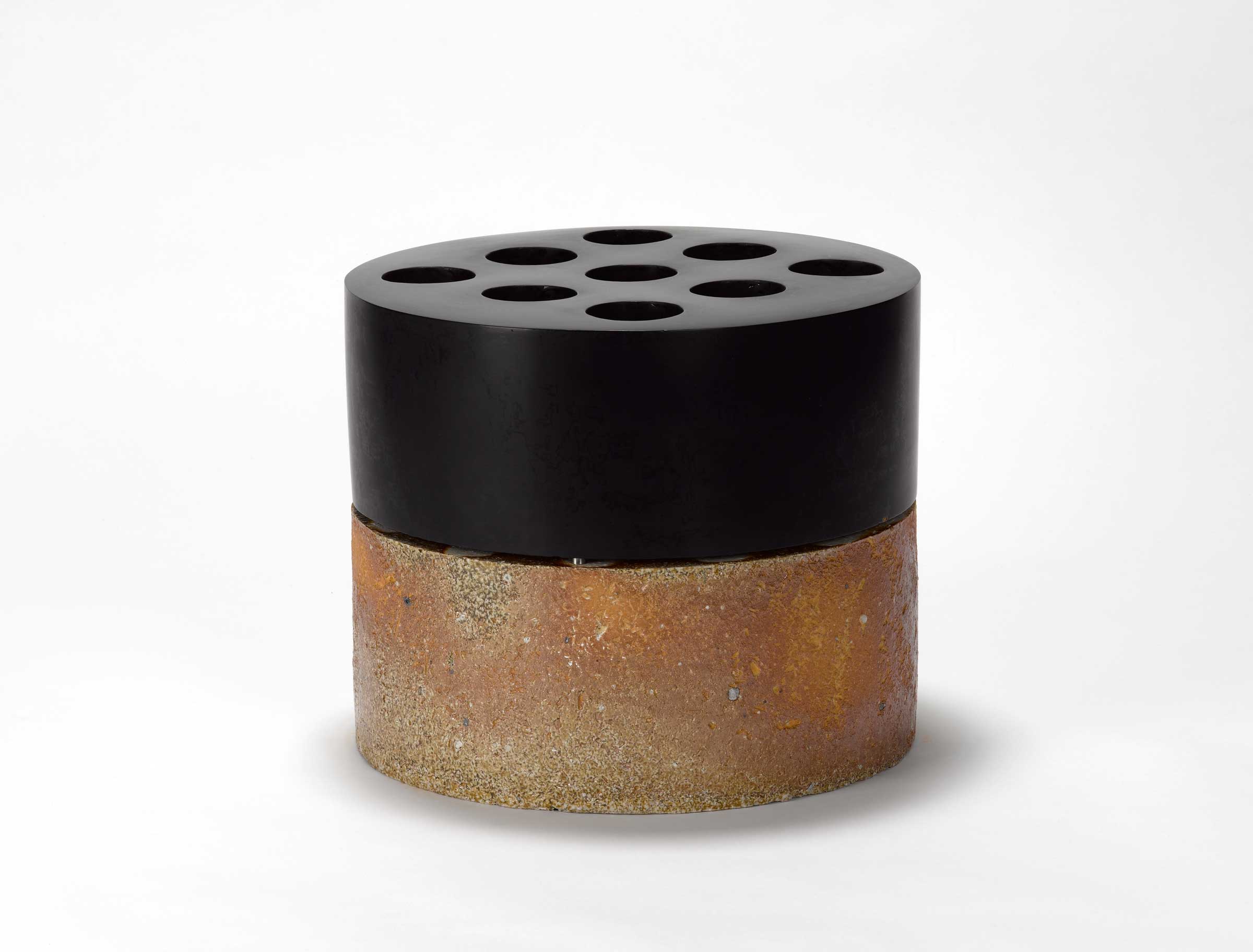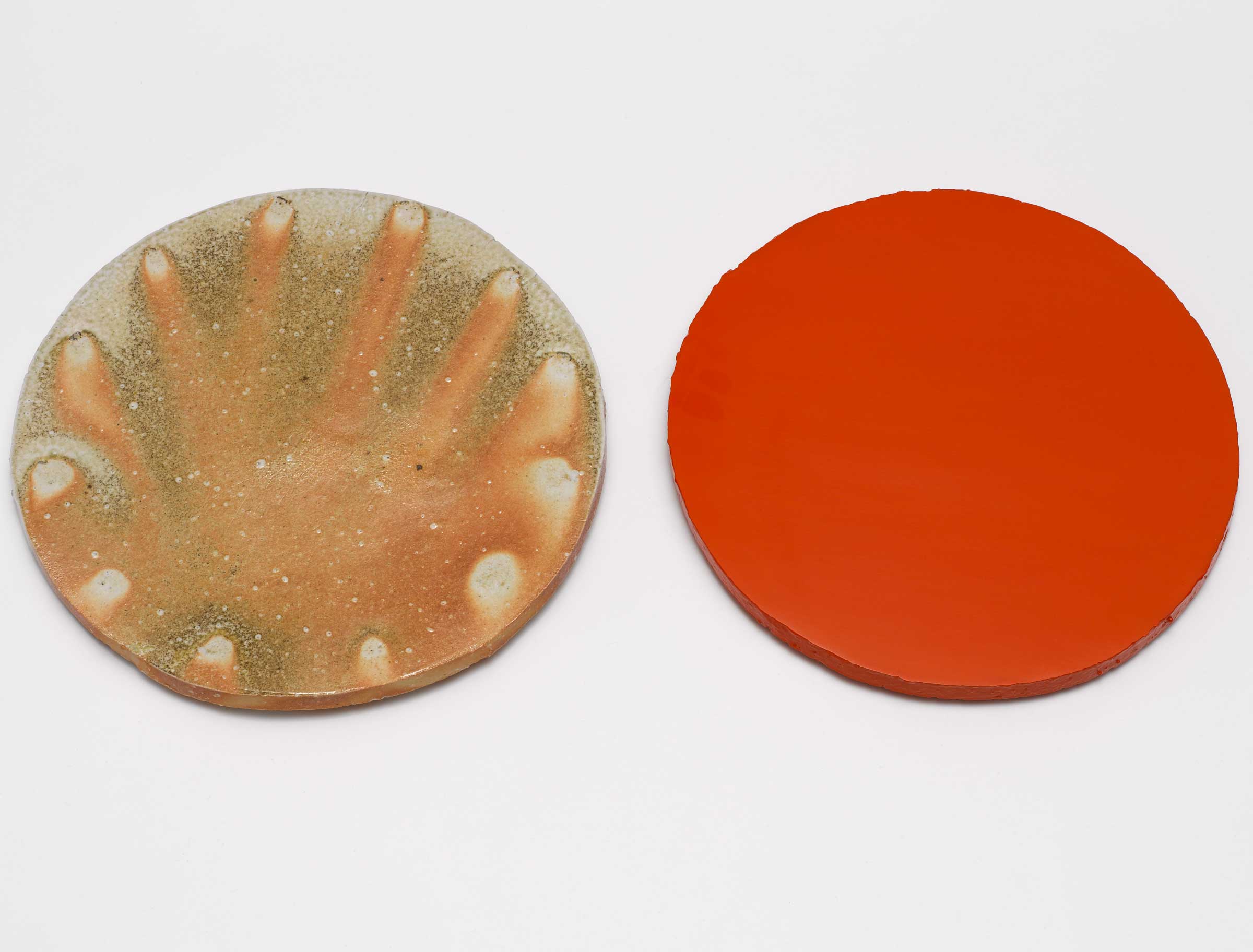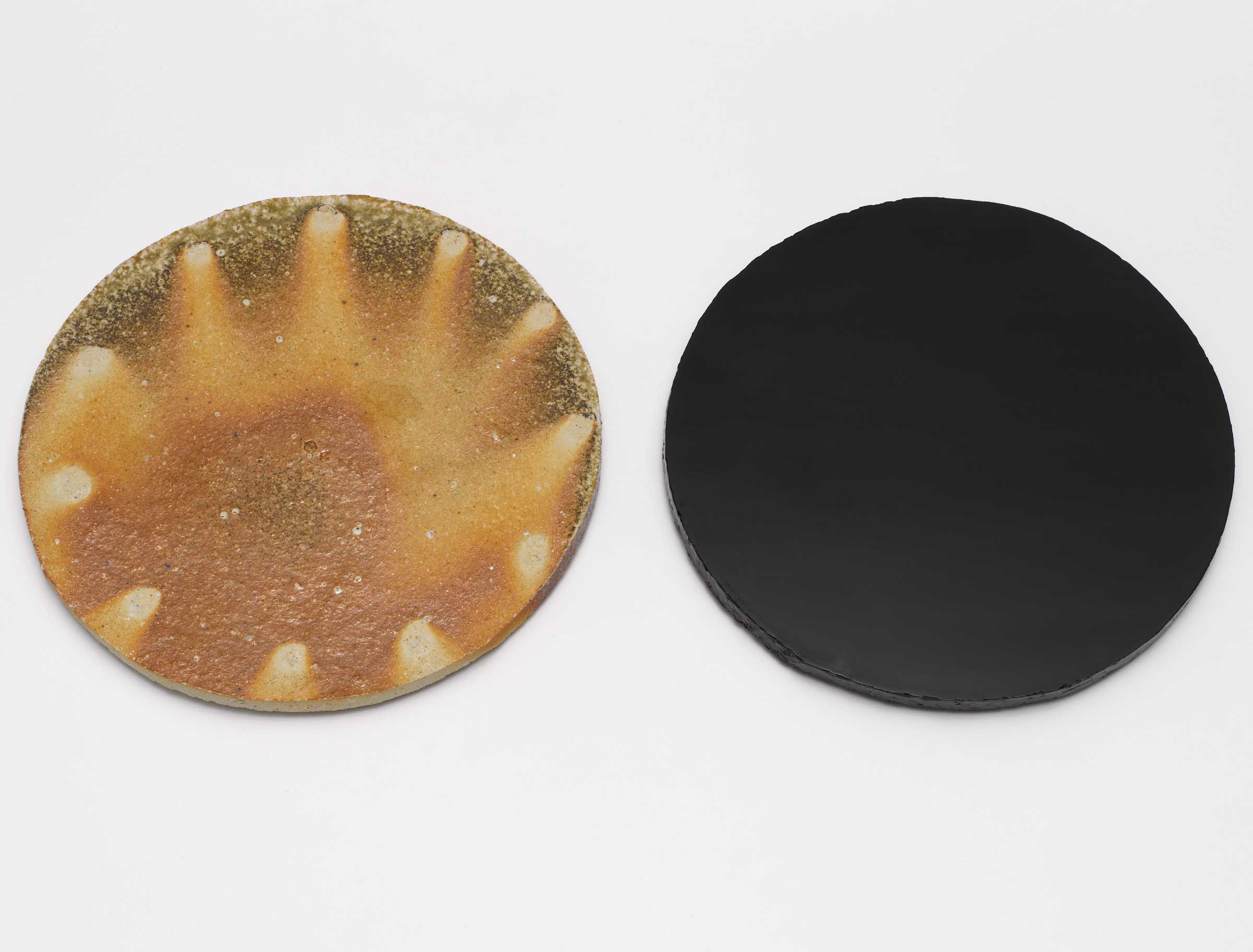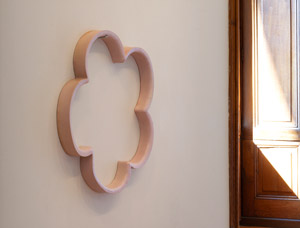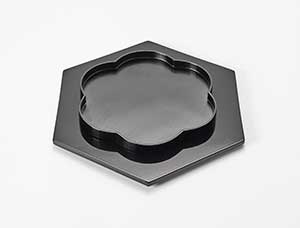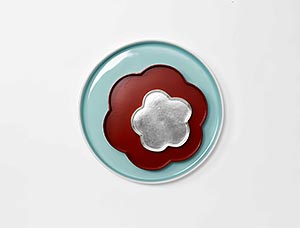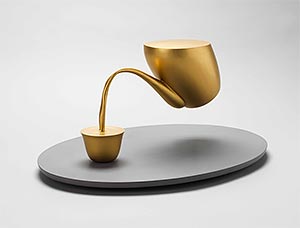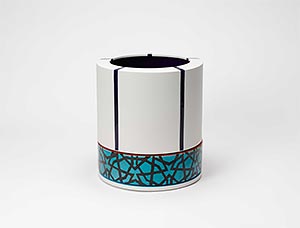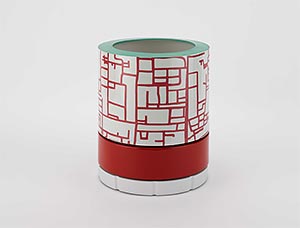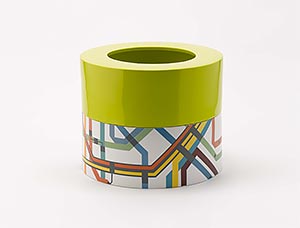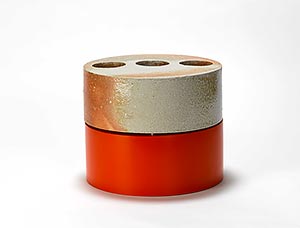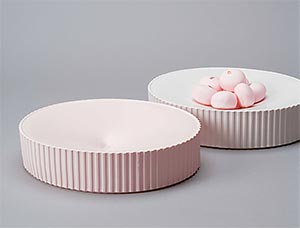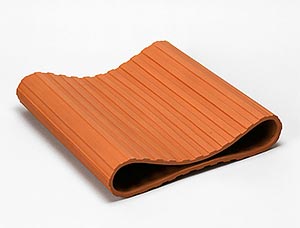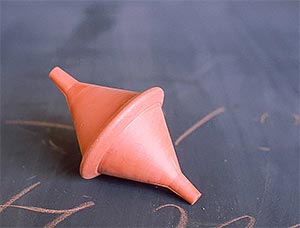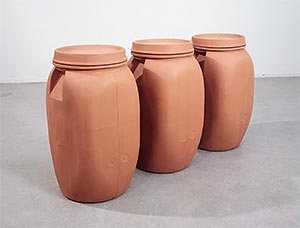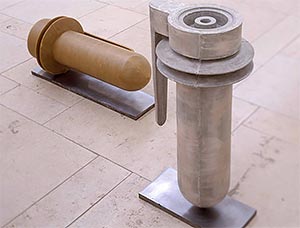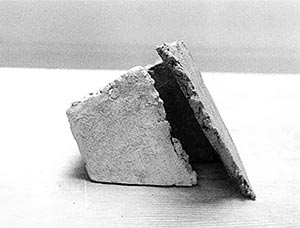
Lotus Series | 2005–2006
This two-piece ceramic is marked by the stringency of its lines and by its immaculate smooth surface. A limited series of seven vessels was produced by the ceramicist while «Artist in Residence» in 2005 at the Shigaraki Ceramic Cultural Park in Japan.
With its names all taken from Japanese words for blossoms, such as Sakura (cherry) or Kiku (chrysanthemum), the series pays homage to the classical decorative elements in east Asian arts and crafts.
The elaborate technique for applying the lacquer, which Margareta Daepp learned under a Urushi master, takes up to three months. The radiant red and the deep black are the traditional colours of east Asian lacquer ware.
While lacquer was customarily used in Japan first to protect and later to refine wood, fabric, leather or paper, in the Lotus Series it has been applied to ceramic.
For this the artist followed up an archaeological sensation. Traces of lacquer were detected for the first time ever on a pottery shard. It is assumed that the lacquer served as a protective layer to seal the porous piece.
The whole series was fired in a simple cave kiln or anagama, as is characteristic of pottery from this region. The lively surface comes from using clay containing feldspar, a grainy substance with white quartz inclusions. The use of pine wood for the firing and the ashes that then alighting on the surface give the ceramic its distinctive coloration.
During the firing process the quartz inclusions distribute themselves randomly in the clay and crystallise to form white, elevated stars on the surface. It is this rough, coarse surface structure and the chance variations in colour – which seem to have been scorched into the pieces like the image of the blazing fire – that give the ceramics from Shigaraki their unique charm.
The contrast between the reflecting lacquer and the grainy surface heightens the sensual experience triggered by the ceramics. The cylinder is created by putting together two sections of vessels of equal value but not of equal nature, so that the dualism of the contrasting surfaces unites to produce a finished form.
Only the use of a mould, which is atypical of Shigaraki pottery but characteristic of the European tradition, permitted such an exact form to be realised.
With this juxtaposition of fired and lacquered surfaces in a moulded form, the artist has produced her own new Western interpretation of the ancient Japanese potter’s art.
Susanne Schneemann
